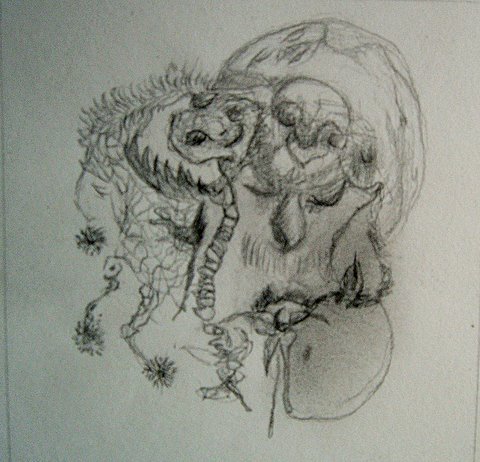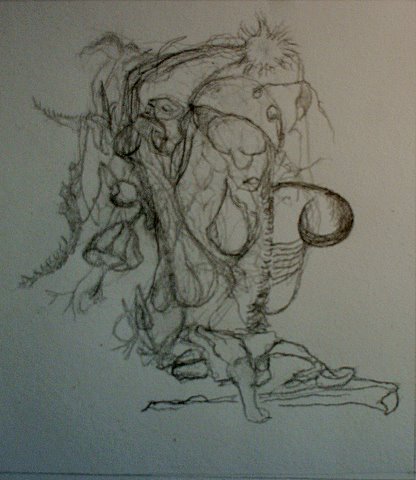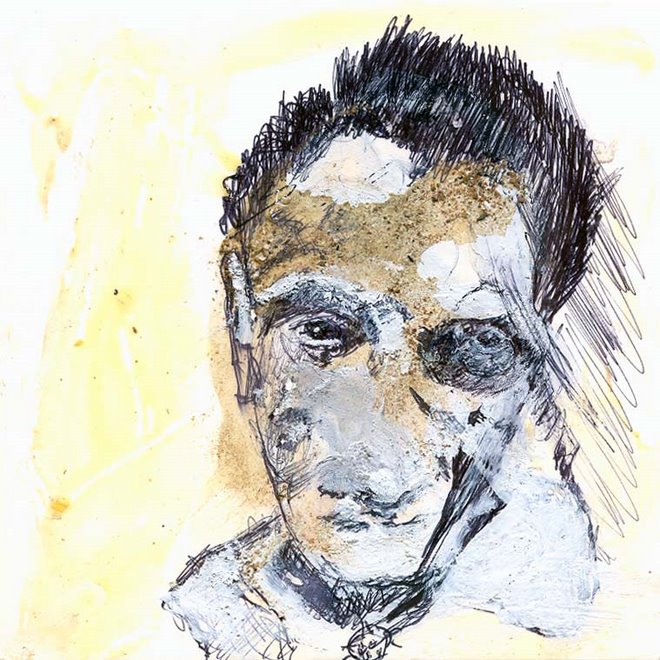In September 1445 Prince Vlad Dracul (Vlad the Devil) captured from Bulgaria some twelve thousand persons "who looked like Egyptians" and took them home to Wallachia, "without luggage or animals", thus he became the first wholesale importer of Gypsies as slaves. The next recorded batch of Gypsies was the booty of Stefan the Great, dubbed "Athlete of Christ" by Pope Sixtus IV for his crusade against the Turks. In 1471, after a great victory over his Wallachian neighbors, the prince transported more than seventeen thousand Gypsies back to Moldavia.
Stefan preceded his cousin Dracula in the use of his favorite torture: following this same battle, he had twenty-three hundred of his prisoners impaled through the navel. If Gypsies on the whole were spared this gruesome end, it may have been because they were retained to forge the spears. The time of Dracula (1431-76) preceded full-blown slavery in the Romanian principalities; but the groundwork had been done. There were certainly models for the legions of Gypsy slaves in Bram Stoker's Dracula (digging and packing the Transylvanian soil that will keep the Count "alive" on his travels). Furthermore, the historical Dracula, Vlad Tepes, seems to have believed that Gypsies were a particularly fearless (or foolhardy) class of warrior. In the epic poem Tsiganiada, by Ion Budai-Deleanu (1760-1820), it is recorded that Dracula led an army of Gypsies, distinguishable by their mottled cowhide uniforms, in battle against the ever-encroaching Turks. Here, the Impaler is not at all the arch villain of Germanic and Slavic (and eventually universal) lore, but rather a national hero. described in the language of the Romanian peasants. whose image of him this was, and serving the cause of an independent Romanian state. (Tsiganiada is acknowledged as the first poem written in Romanian.) Gypsies were in the army all right; on this fantasy they fought alongside angels.
Sitting in the Sibiu market cafe watching the Gypsy women expertly counting their money, I found it hard to believe: Gypsies as slaves--the notion goes against every West European and New World stereotype. The Gypsies are catalogued in the imagination as a kind of definition of rootlessness and freedom. Had this ignominious episode in Gypsy history become better known, then perhaps that pervasive free-spirit fantasy might have failed to establish itself in the first place.
I had found almost nothing on the subject of chattelage in all the writings about Gypsies published over the past century in the West. There was a polemic of 1883, written in French by the Romanian statesman Mihail Kogalniceanu, with very little in the way of concrete information. And there was a 1939 book by the Romanian historian George Potra, the only full-length account on slavery--written in Romanian, untranslated, and the sole source for every subsequent account. It was out of print but I knew of one copy, at the Nicolae Jorga Institute, on a tree-lined avenue of suburban Bucharest. After two failed visits, to the institute, I appealed to an American friend who'd lived in Bucharest for a decade and who'd done research there, and he got me an appointment with the resident historian. This septaugenerian medievalist, who wore thick, round tortoise-shell spectacles, received me in his dark-paneled resident historian's rooms and questioned me, in French. Halfway through this interview we were served strong black coffee in demitasse cups by the librarian who twice rebuffed me. Things were definitely improving; nevertheless, I surmised, Gypsies would not be a popular topic here, even from an historian's point of view. Our chat not only severely tested my French but exhausted the complete stock of my knowledge and then my bluff about the fifteenth century spread of Magyar latifundia and the domination of Saxon rentiers, about the miserable Romanian serfs and the rise of Romanian nationalism as even noblemen were reduced to a life of subsistence tilling... But after forty minutes an earlier demand-- for a notarized and posted request for the book, written on the letterhead of my own "institute" --was waived. When the still-suspicious librarian finally did produce the book she also gave me one hour and kept my coat as collateral, so that I might have photo-copied in the downtown office of a friend.
The entire
book was then translated by Corina. While she struggled to transcribe
Potra's antiquated prose, Corina also experienced a (tentative)
revelation about the Gypsies, whom she had previously seen only as
inexplicable hostile lurkers at her door. Her reaction to the material
was evidence of how, astonishingly, the history of Gypsy enslavement,
which spanned four centuries, remained unknown even among educated
Romanians.
Before 1989, no scholars would have had
easy access to documents in the territories. And then, during the
revolution, the magnificent library of Bucharest University was badly
burned. Apparently too, many important records relating to Gypsies in
the Danubian territories were lost. But still. in the archives of other
historical institutes of Bucharest, Sibiu and Brasov, the proofs are
there--dusty, faded, and even reluctantly served up by doddering
librarians or guards who even know what they are begrudging you. Lists
were what I mainly found--the very sources Potra had given shape to. A
picture emerged.
For more than four
hundred years, until 1856, Gypsies were slaves in Wallachia and
Moldavia, the feudal principalities that with Transylvania now make up
modern Romania. Some Transylvanians also owned Gypsies, but only in
these principalities was slavery an institution, at first guided by the
"custom of the land" and eventually enshrined in a complete legal
framework.
Standing as the last outpost of Christendom in
the midst of the Ottoman offensive -- long after the greater part of the
Serbian Kingdom, Bulgaria, Albania, and most of the Balkan peninsula
had fallen--Wallachia and Moldavia flourished.
Once the crusades had opened the major trade routes along the
Danube that linked Byzantium to the West, the princes of the territories
that would become Romania made great fortunes by war, and by supplying
food to Constantinople. But from the early sixteenth century, when the
sultans actually occupied the Black Sea ports, the strength of the
principalities was increasingly maintained by slave labor.
The Latin-speaking Vlachs who lived in Wallachia-Moldavia (and whose
descendants inhabit modern Romania) soon recognized the economic value
of the Gypsies. Indeed, though an earlier record of Gypsies in the
Balkans documents Vlachus and Vitanus, two "Egyptians," as placing an
order with a Dubrovnik goldsmith in 1362, the first mention of Gypsies
in Romanian archives looks like a reference to cattle. In 1385, the lord
of all Wallachia. Prince Dan I, reaffirmed a gift of forty Gypsy
families made fifteen years earlier by his uncle to the monasteries at
Vodita and Tismana. In the 1388, the next Wallachian prince, Mircea the
Old, donated three hundred families to the Cozia monastery. In Moldavia
in 1428, Alexandru the Good handed over "31 tsigani tents" to the
monastery of Bistrita-- the same monastery with it's shaded streams and
rising fields where Kalderashi Gypsies hold their annual festival,
robustly ignorant of the taint on this sylvan setting.
It is not really known how the enslavement began. One theory is that Gypsies came over as chattels of the invading Tartars who made their way along the norther-Crimean route to Moldavia. That is, they were already slaves when they appeared in the principalities and abandoned on the battlefields by the defeated Tartars, they remained to serve their new Hungarian and Romanian masters. (No explanation is offered for the fact that the Tartars left no other such impedimenta in the other Central and Eastern European countries they attacked.) Gypsies were always slaves, it was furthermore claimed; they came from the pariah class in India; slavery was in their blood. Such analysis was elaborated upon, especially by Romanian historians: slavery was seen to be an improvement on the Gypsies previous station (about which, even now, nothing has been firmly established), because here at least they were usefully integrated into society. A certain Dr. Wickenhauser, who visited the principalities in the nineteenth century, corroborated the view of earlier and later Romanian historians: Gypsies "wished to become slaves, because this would raise them, if not to the level of human being, at least to a par with good, working domestic animals."
Some Gypsies did manage to remain free, simply by keeping out of sight.
Anyone who could not name his or her master when stopped in the road
automatically became the property of the Crown. Foreign Gypsies who were
just passing through -- tourists, let's say -- were routinely rounded
up. The fact was, though, all Gypsies were construed as foreigners of a
kind: within the principalities, claims on land not only determined
social and political privilege but were the basis of citizenship itself.
To be "native" (pamintean) in the principalities meant to be the owner
of a piece of land (pamint). Peasants could own land but Gypsies could
not. As Harghita County's public prosecutor has pointed out, some
Gypsies did now qualify to receive land--if they could prove
uninterrupted attachment to a cooperative for a minimum period of 3
years. But the elaborate bureaucratic hurdles erected against them
(along with the famous "lost application") persuasively suggest that
such provisions were-- and are-- hollow.
Current attempts
to evict them have much to do, as always, with the scramble for land.
And so one has to wonder: are the Gypsies really nomadic by "nature" or
have they become so because they were never allowed to stay?
The
fate of Romanian Gypsies has been linked to that of Romanian peasants
ever since they shared the same patch of ground six hundred years ago.
Together peasants and slave constituted the lowest stratum of feudal
society-- creating the impression that there was little to choose from
between slavery and serfdom. Indeed, despite the laws against
miscegenation, there was a good deal of mingling between them.
(Confronted with a particularly racist Romanian, I found that I reached
easily for this --to them wildly insulting-- explanation of the fact that
Romanians on the whole are darker that their Slavic neighbors.
But only Gypsies were human chattels who could be separated and sold
off t whim, like farm animals. Art first glance, the documents seemed to
be medieval shopping lists. To Corin's amazement and to mine, that is
more or less what they were. Shopping lists, or records of exchange
rates: one Gypsy for one pig; a team of Gypsies for a team of oxen or
horses; a newlywed couple for a few barrels of wine; one man for a
garden or for the use of a garage space; one Gypsy girl fetched "a pair
of copper pots," and another, a defective one perhaps, went for a jar of
honey. It was even possible to sell "half a Gypsy," which meant a woman
with half of whatever children she would bear: proof that, despite
other laws that expressly prohibits it, Gypsy families were
systematically sundered.
As their value increased there
were fewer and fewer unclaimed Gypsies in the principalities, and so the
Crown kept up its stock by importing them. They were brought over in
large quantities from south of the Danube
specifically to
be used as forced labor -- a practice that alone explains why Romania
is still home to by far the greatest number of Gypsies (some 2.5 million
-- * this figure has shrunken to 1.85 million by current estimates --
JG*) in any single country.
One hot late summer
afternoon in the library of the Nicolae Jorga Institute I sat reading
Mihail Kogalniceanu's 1837 treatise on Gypsy slaves. This dark place,
with it's smell of old straw and it's silent, even-handedly unhelpful
librarians, did not seem a likely venue for revelations of any kind. But
suddenly I realized something, perhaps something obvious. It seemed
inescapable that the trade in Gypsies represented a turning point: from
the moment that they were imported en masse, the prejudice
against them was sealed. The term "Gypsy" (and it's regional variations)
no longer signified a broad ethni c group or race-- or even, as it
sometimes had, a particular profession, such as musician or metalworker.
For the first time it referred collectively to a social caste: the
slave caste.
Some masters even give their Gypsies a bit of land to instill in
them the love of agriculture (Kogalniceanu wrote), or --if there
was no more field work to be done--allow them to play their music...
but they lost their liberty...so that in the two principalities the
Were the violence and
hatred against Gypsies today the legacy of slavery--along perhaps, with
their own difficulty in overcoming low expectations? The idea was
certainly widely accepted in relation to others with a similar history,
such as African Americans. But then how had the episode of Gypsy slavery
been overlooked or dismissed by so many historians?
Later the same day, after the Institute closed, I walked through a long
leafy park, past Bucharest's own replica of the Arc de Triomphe...
Here I ran into Nicolae Georghe, the Gypsy sociologist and activist...
As usual he looked exasperated -- already wearied by my anxious face,
full of questions only he could answer. Now he opened up. Not only did
he agree with this hypothesis, shoulders raised and gesticulating with
both hands or pausing to restrain a rogue lock of black hair... he
offered an interesting proof.
"Take the Rudari,"
Nicolae said. The Rudari (aka Boyashi https://en.wikipedia.org/wiki/Boyash) were slave wood-workers (who also did
gold-sifting and bear-training), and though they no longer necessarily
whittle wooden tools, they still constitute a large Gypsy grouping in
Romania. From the time they were first imported from South of the
Danube, Nicolae explained, the Rudari, like other bondsmen, were called
Gypsies. But they spoke no Romani, and apparently they never had. The
shared no customs with the Roma, such as traditional dress or pollution
codes. So were the Rudari Gypsies? Absolutely: they were slaves.
The terms "Gypsy" and "slave" were interchangeable; they described a
particular social caste. For example, in the eighteenth century, even
though they were not legally recognized, marriages between serfs and
slaves were on the rise and it was written into law that "the Moldavian
who would marry a Gypsy woman would become a slave and the Romanian
woman who married a Gypsy man would herself become a Gypsy." And once
the Gypsies had become a social group it was only a matter of time
before they would become a social problem. -- with all the usual
connotations of innate criminality.
Then too
also ideas of criminality were changing. After my first visits to the
burnt-out villages I had become increasingly curious about the Ursari--
or bear-trainers, as the Gypsies of Bolintin Deal were called. With my
interest aroused, I found I kept stumbling on related material: a series
of advertisements in the Herald Tribune, for example, placed by an
animal rights group. One carried a photograph of a bear cub harnessed
and a with a chain through it's nose, and called for donations to help
stamp out the practice in Turkey and Greece (the campaigners were
lobbying for the bears, not against the trainers; there was no mention
of Gypsies, their likely keepers).
To the
people of Central Europe and the Balkans, these brightly colored,
thoroughly mangy troupes of bears and monkeys must have been a wonderful
sight in the grueling last years of communism. However pathetic, they
were also emblems of the past that would not be modernized or made
"productive" in the Stalinist sense. And perhaps they supplied the rare
avenue for mockery: for some reason, in Ceaucescu's Romania people
continued to pay money to see clapping monkeys and dancing bears.
I
had since met some Balkan Ursari who still lived with and off their
bears, and now, in my diggings in the rural Romanian archives, I found
mention of Ursari slaves. It seems that the ruling princes of Wallachia
and Moldavia always possessed a good supply of families who traveled
with their bears and monkeys, collecting for the Crown.
Animal
dancing is now dying out from a combination of pressure for animals'
rights, war (the bears were big earners in Yugoslavia) and loss of
interest among Ursari. Nevertheless, in some parts of the Balkans you
can still see them, loping along roads to the old tune of fiddles,
concertinas and bells. In Jagoda, a small wooded hamlet near Stara
Zagora in central Bulgaria, there are a couple dozen shaggy brown bears,
tethered to trees around which they churn mud into moats. But the
Ursari and their bears only stopped here in the winter, when they'd meet
to plan their summer routes and to squabble over the Black Sea resorts
of Varna and Burgas; by Easter they were on the road.
Campaigners
decry the cruel treatment of dancing bears. But the bears I saw, bought
or rescued from East European zoos, were clearly loved by their
keepers. As the primary bread-winners, and expensive to replace, they
were also the best-fed members of the clan. Natasha, one of the Jagoda
Ursari, wore a mismatched pair of cheap rubber slippers that had cracked
open and had been darned with copper wire.That's how careful they were
of their possessions; and that's how poor they were. Nevertheless and
though the Ursari in Jagoda indignantly denied it, the Pavlovian
training consists of burning the paws of cubs to the sound of music, and
offering tidbits of meat. The campaigners also believe that the dancing
itself is degrading-- the equivalent, say, of forcing men to perform
for crowds on all fours.
Indeed, only 150
years ago, Gypsies were themselves dancing bears of a kind. Del Chiaro,
the Italian secretary to Prince Constantin Brancoveannu, wrote in his
memoirs about entertainments involving Gypsies:
In
some courts they were painted with soot and with their hands behind
their backs, standing before a bowl of flour in which a few coins were
hidden, they were obliged to duck for the coins with their teeth... Or
else they would be made to catch in their mouths, while running, an egg
suspended in the air... or to remove from a candle a coin lodged in the
wax, without extinguishing the flame. Naturally they burned their lips
and hair.
Gypsy slaves were made into clowns, but they were also status symbols, and an essential part of any halfway decent dowry. The
haul of Mariuta, the niece of the very same Prince Constantin
Brancoveanu, would have been typical for a society wedding: she received
from him "Mogosoaia village together with the land; the vineyards, the
lake and the mills, and 19 Gypsy families." Without Gypsies even the
fairest among the well-born maidens might never wed. A letter dated
1785, from Zmaranda Zalariu, the wife of a nobleman, was sent to Prince
Alexadru Ioan Mavrocordatos, begging, "with tears in her eyes" for a
special dispensation of Gypsies so that her only daughter might be
"saved" from spinsterhood. The merciful prince complied, with a deed of
four Gypsy families. Similarly, Gypsies were passed from father to son.
The will of Prince Brancoveanu provided that: "The Gypsies... from
Potlogi village shall go to Constantin (his son), the ones in Mogosoaia
village to Stefan; those in Obilesti village to Radu, and the ones in
Doicesti village shall be for Matei."
Though
not regarded as quite human, Gypsies nevertheless made good concubines.
A pretty girl could fetch a much higher price than a merely
hard-working one, or than even a fit and skilled young man. Whereas it
was illegal to prostitute one's slaves (the punishment for the boyar
was incarceration in a salt mine), it was acceptable to give the girls
away. In addition to his daughter's own dowry, a nobleman might welcome
his new son-in-law with a separate gift of "a small Gypsy girl."
Nothing of the kind could have befallen a peasant girl, who, along with
her family, was attached to-- and in a sense, safe-guarded by --the
land.
Masters always had the power to
manumit their slaves, but in special cases the Crown established freedom
as a right. If a slave served as a concubine, and her master had failed
to free her before his death, she and her children automatically walked
free. This law, which provided such excellent incentive for homicide,
was no doubt unknown to the child concubines. It was more likely that in
her capacity as a mistress, the girl would not usefully outlive the
needs of her master.
The diary of Ermiten von
Gauting, a German tourist who passed through Craiova on his way to
Constantinople in 1836, gives a chilling account of such relationships:
In the evening when the heat went down, I went out into the city
and there I saw a scene that I could not have thought of, not even
in my imagination. Along with a bunch of of animals, the wife of
some boyar had a few gipsies, among them a very beautiful girl
of 15, whom she sold to a man for a few gold coins.
The girl was to be taken at the very moment I passed in front
of the miserable house where she stood with her family, crying.
Her parents, brothers and sisters were all crying, but still she
was wrested from the arms of her mother and taken away.
I went up to the barbarian man and told him that I would buy
her back, but he was very rich and laughed at my offer of 50
gold coins. He bragged that he had bought her for his pleasure...
And if she would not obey him he would beat her until she did.
He told me that is he wanted to buy gipsies, he had 500, and
among them some very beautiful girls. He said he wouldn't mind
selling those ones as they had already served him but with this
girl he was really in love and could not part for any price.
I went to the police and have gone and talked everywhere but
they all laugh at my stupidity. 'Gipsies are our property and
we can do with them as we like."
In Bucharest, von Gauting saw many Gypsy beggars with their hands cut off and heard that their masters were responsible.
"One
of those told me that his father had killed his master who had wanted
to cut off his hands and for that his father was hanged."
"Sometimes the boyars would allow their children some 'fun' by whipping
these begging gipsies," von Gauting concludes his Craiova diary, "and
they claim this is part of their daily education. Parents kill and maim
as they please; children are taught to take their pleasures from early
on. The gipsies are treated worse than animals."
More than 150 years later, one still sees neatly maimed beggar children (not just Gypsies) in the streets of Bucharest. But now the police and the directors of the main children's shelter in the capital routinely claim that it is the children's parents, always Gypsies, who mutilate them, to improve their earnings (or, as one policeman explained to me, "to give them a profession.") However, a Romanian reporter who was investigating the stump children in the 1990's established that these little beggars were organized not by their fathers -- in equipe voleuses, as the Francophile head of the children's home referred to the Gypsy families -- but under professional pimps. The pimps --sometimes Gypsies, sometimes not-- also ran the child prostitutes at Bucharest Nord station; and for their trouble they kept them in candy and glue.
The uniform ignorance among the Gypsies, even Romanian Gypsies, about their slave past was striking. Under Ceacescu, of course, history was deposed by myth. But the Gypsie may also feel that slavery -- like their fate under the Nazi's -- is just another episode in a more or less continuous narrative of persecution. Romanians knew nothing about it either. This is an indication of the status of Gypsies here and in the wider world: an indication of their invisibility.
Near the Black Sea resort Constantsa lies the town of Mihail Kolgalniceanu, the scene, in October 1990, of one of the first of the postrevolutionary purges of the Gypsy population. The residents of Mihail Kogalniceanu do not seem to know who Mihail Kogalniceanu was. He was an eloquent liberal statesman and an ardent and influential abolitionist. More than twenty-five years before emancipation in the principalities, he wrote:
One hundred and fifty years later, in the town named for the great man, slavery is gone but the gloom and barbarism persists.
from
Vintage Departures Editions, 1996, pp 174 -- 186
by Isabel Fonseca
Fonseca's book surveys Gypsy life-styles throughout the Balkan and Eastern Europe and the accounts are based on her personal field-work living with Gypsy families and pursuing independent research. Obviously some of the statistics could be out of date but my own travels, research, observations also confirm the book is spot on, the social dynamics of the Romany clans and the people around them having changed very little in 25 years. The tone of Fonseca's book is sympathetic towards the Gypsies but very little romantic and her descriptions are graphic, realistic and compelling. They create curiosity in this reader by showing the complexity of occasions. This chapter aims to explain the ambiguity of the people's status as free after the official abolition of slavery and the ways in which the various Governments have been unable or unwilling to either let the Gypsies live the way they wish on the road or to leave them alone in settlements without harassment. As usual, the underlying issues relate to giving land to a landless people when real estate is the last natural resource. Just as I was publishing this update another very interesting document was sent to me, one that decsrcibes in great detail the history of Gypsy slavery in Moldavia & Wallachia as it evolved into Romania and the various labor classifications and tax burdens placed upon Gypsies, as well as laws dictating their mobility and social interactions, the Romanian Jim Crow laws, in a word. Thanks to Chris Barron for the link...
Marushiakova, Elena and Vesselin Popov. 2009. Gypsy Slavery in Wallachia and Moldavia. In:
Kamusella, Tomasz and Krzysztof Jaskulowski, eds. Nationalisms Today.
Fonseca's book surveys Gypsy life-styles throughout the Balkan and Eastern Europe and the accounts are based on her personal field-work living with Gypsy families and pursuing independent research. Obviously some of the statistics could be out of date but my own travels, research, observations also confirm the book is spot on, the social dynamics of the Romany clans and the people around them having changed very little in 25 years. The tone of Fonseca's book is sympathetic towards the Gypsies but very little romantic and her descriptions are graphic, realistic and compelling. They create curiosity in this reader by showing the complexity of occasions. This chapter aims to explain the ambiguity of the people's status as free after the official abolition of slavery and the ways in which the various Governments have been unable or unwilling to either let the Gypsies live the way they wish on the road or to leave them alone in settlements without harassment. As usual, the underlying issues relate to giving land to a landless people when real estate is the last natural resource. Just as I was publishing this update another very interesting document was sent to me, one that decsrcibes in great detail the history of Gypsy slavery in Moldavia & Wallachia as it evolved into Romania and the various labor classifications and tax burdens placed upon Gypsies, as well as laws dictating their mobility and social interactions, the Romanian Jim Crow laws, in a word. Thanks to Chris Barron for the link...
Marushiakova, Elena and Vesselin Popov. 2009. Gypsy Slavery in Wallachia and Moldavia. In:
Kamusella, Tomasz and Krzysztof Jaskulowski, eds. Nationalisms Today.















No comments:
Post a Comment